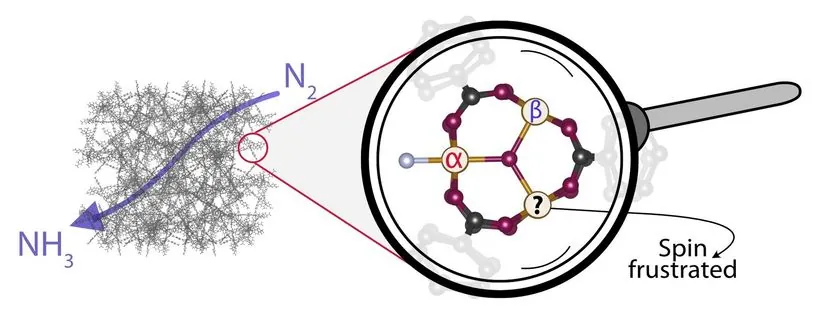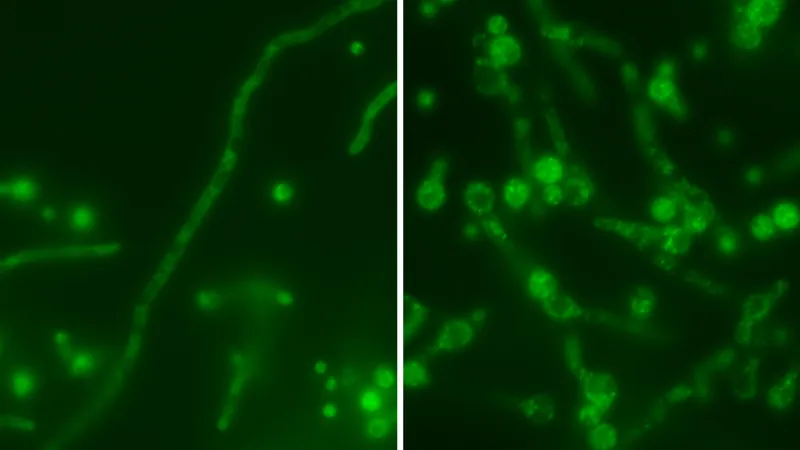
Unlocking the Secrets of Ammonia Production: Quantum Mechanics Reveals Iron Catalyst's Hidden Potential
2025-09-11
Author: Ming
In the quest for more sustainable methods of ammonia production, a breakthrough has emerged that promises to transform fertilizer production, a process responsible for around 2% of global energy consumption.
Researchers have turned their attention to MIL-101(Fe), an innovative metal-organic framework where three iron atoms form a triangular configuration around a central oxygen atom. This catalyst has generated excitement for its potential to enhance efficiency and thus reduce CO2 emissions significantly.
Rethinking Iron Atom Spins: A Revolutionary Discovery
For years, the scientific community believed that the spins of these three iron atoms aligned in a parallel formation. However, a groundbreaking study led by Leticia González and Georg Kresse has overturned this assumption, revealing that the spins actually align in an antiparallel fashion.
Yet, here's where it gets intriguing: due to their configurations, not all three iron atoms can align in this manner at once—rendering two atoms compliant with this requirement while the third atom must adopt a conflicting orientation. This phenomenon is termed a "spin-frustrated state." Patrick Lechner, the study's lead author, likens the scenario to three individuals trying to sit at a round table, with each wanting to sit opposite someone else. It’s a frustrating puzzle that seemingly defies physical logic.
Quantum Mechanics Saves the Day: A Game-Changer for Catalysis
In a surprising twist, quantum mechanics offers a solution to this conundrum. Instead of forcing a single arrangement, the spins can simultaneously exist in a myriad of configurations—a superposition. This means that just as Schrödinger's cat exists in a state of being both alive and dead until observed, the spins of these iron atoms coexist in various configurations, each contributing to the overall catalytic prowess.
González elaborates that this magnetic frustration, explained through quantum superposition, stabilizes the catalyst's structure. The result? An enhanced ability to interact with small gas molecules like nitrogen (N2) and carbon monoxide (CO)—key players in ammonia synthesis.
A Leap Towards Sustainable Chemistry
The insights from this study, published in Angewandte Chemie International Edition, hold tremendous promise for the future of ammonia production. By harnessing the unique properties of triangular iron clusters, researchers could significantly elevate the efficiency and performance of catalytic processes, paving the way for a greener, more sustainable approach to fertilizer production.
This research not only illustrates the power of quantum mechanics but also underscores the vital importance of innovative chemistry in the ongoing battle against climate change.



 Brasil (PT)
Brasil (PT)
 Canada (EN)
Canada (EN)
 Chile (ES)
Chile (ES)
 Česko (CS)
Česko (CS)
 대한민국 (KO)
대한민국 (KO)
 España (ES)
España (ES)
 France (FR)
France (FR)
 Hong Kong (EN)
Hong Kong (EN)
 Italia (IT)
Italia (IT)
 日本 (JA)
日本 (JA)
 Magyarország (HU)
Magyarország (HU)
 Norge (NO)
Norge (NO)
 Polska (PL)
Polska (PL)
 Schweiz (DE)
Schweiz (DE)
 Singapore (EN)
Singapore (EN)
 Sverige (SV)
Sverige (SV)
 Suomi (FI)
Suomi (FI)
 Türkiye (TR)
Türkiye (TR)
 الإمارات العربية المتحدة (AR)
الإمارات العربية المتحدة (AR)